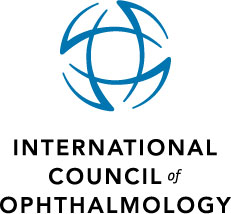Female subject, 36 years of age, BCVA 1.0 OD, 1.0 OS, IOP 13 OD,12 mmHg OS.
Major complaints: bad night vision
Ocular medical history: since 8 years decreased night vision
General medical history: empty.
Fundus image showing waxy optic disc pallor, attenuation of retinal vessels, and rare bone spicule pigmentation.
Electroretinogram showing no scotopic and diminished photopic responses.
OCT depicting a substantial loss of the outer nuclear layer. This layer with rod and cone photoreceptor nuclei is severely attenuated. The inner nuclear layer with amacrine cell, bipolar cell, horizontal cell neurons, and the ganglion-cell layer are well preserved,
General comment:
RP means a subset of diseases, in which patients typically lose night vision in adolescence, peripheral vision in young adulthood, and central vision in later life. The cause is progressive loss of rod and cone photoreceptor cells. Retinitis pigmentosa (RP) is a relatively common progressive retinal degeneration. RP is a leading cause of vision loss in young adults and affects 1 in 4000 people. 1
More than 45 genes for retinitis pigmentosa have been identified, accounting for about 60% of all patients. RP may be inherited in autosomal dominant (30%–40%), autosomal recessive (50%–60%), X-linked (5%–15%), mitochondrial, and digenic forms with many causative genes identified. Fundus examination shows regularily the characteristic triad of bone spicule pigmentation, waxy optic disc pallor, and attenuation of retinal vessels. Retinal vessel attenuation is recognized as an almost universal finding in eyes with RP reflecting decreased metabolic demand of the degenerating retina. Histopathological studies have reported sclerosis and atrophy of the retinal vasculature in extreme cases.
Nutritional intake can modify the rate of decline of visual acuity in retinitis pigmentosa. Berson et al. 2 evaluated whether a diet high in long chain ω-3 fatty acids can slow the rate of visual acuity loss. They calculated dietary intake from questionnaires from 357 adult patients from 3 randomized trials who were all receiving vitamin A, 15 000 IU/d, for 4 to 6 years. They found that mean annual rates of decline in visual acuities receiving vitamin A, 15 000 IU/d, are slower over 6 years among those consuming a diet rich in ω-3 fatty acids.
Literature:
1 Hartong DT, Berson EL, Dryja TP. Retinitis pigmentosa. Lancet. 2006 Nov 18;368(9549):1795-809.
2 Berson EL, Rosner B, Sandberg MA, Weigel-DiFranco C, Willett WC. ω-3 intake and visual acuity in patients with retinitis pigmentosa receiving vitamin A. Arch Ophthalmol.2012 Jun;130(6):707-11.
 | Optic Nerve Atrophy in Retinitis Pigmentosa (OD, Colour Image) |
 | Optic Nerve Atrophy in Retinitis Pigmentosa (OS, Colour Image) |
 | Retinitis Pigmentosa (ERG) |
 | Retinitis Pigmentosa (ERG) |
 | Retinitis Pigmentosa (OD, Colour Image) |
 | Retinitis Pigmentosa (OD, Mosaic Colour-, ERG-, OCT-Image) |
 | Retinitis Pigmentosa (OD, OCT) |
 | Retinitis Pigmentosa (OD, OCT, Circular Scan) |
 | Retinitis Pigmentosa (OD, VEP) |
 | Retinitis Pigmentosa (OS, Colour Image) |
 | Retinitis Pigmentosa (OS, VEP) |
-------------------------- --------------------------
-------------------------- --------------------------
-------------------------- --------------------------
-------------------------- --------------------------
-------------------------- --------------------------
-------------------------- --------------------------





